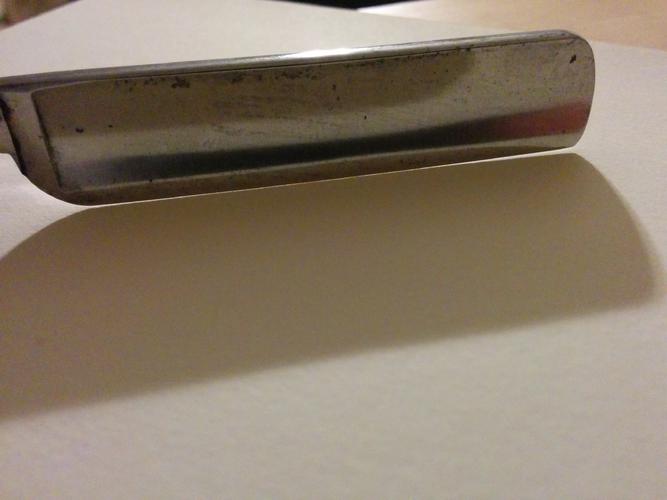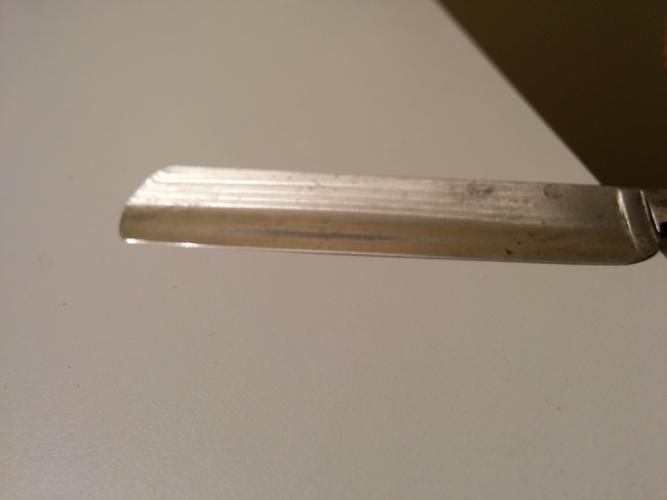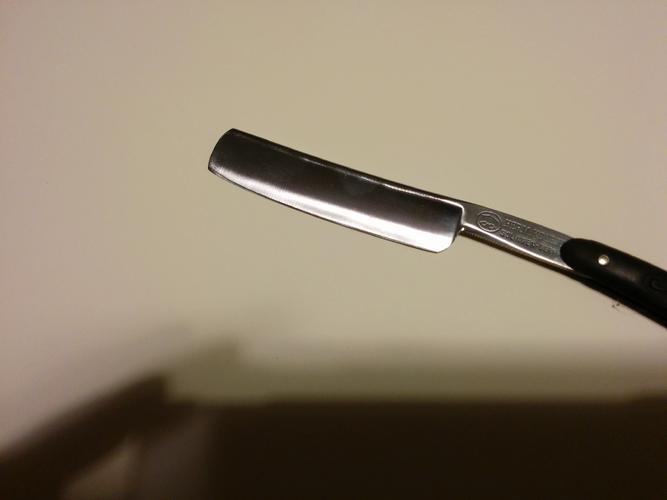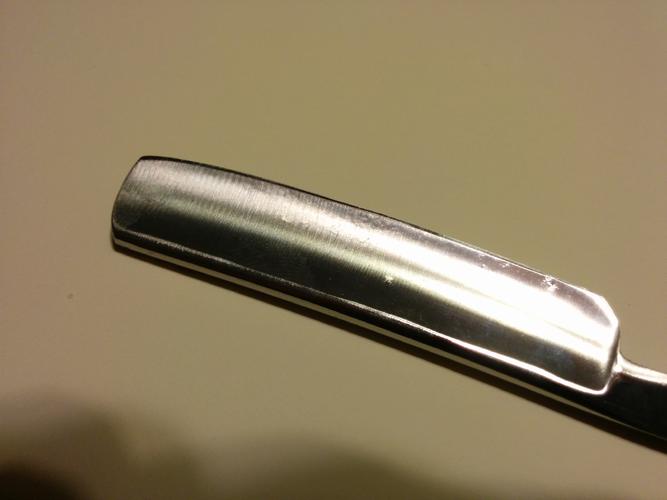Results 11 to 20 of 20
Hybrid View
-
01-06-2015, 01:24 AM #1

Can you give us a picture of this razor? It's really hard to give advice on geometry issues when we don't have a clear idea of what the issues are. Sometimes they are hard enough to figure out with the razor in hand.
-
01-06-2015, 01:57 AM #2Junior Member

- Join Date
- Jun 2012
- Posts
- 21
Thanked: 3
Here are a couple pics of each. You can see the Geneva actually has the slightest of smile.

Here is a pic showing the warp

You can see a hint of shadow under the middle.
PS: when I mentioned more pressure I was referring only to the strop. In reference to the comment that strops usually conform the blade. Are there varying opinions on this? I have to admit I have had best results with as little pressure as I can discern.Last edited by no7fish; 01-06-2015 at 02:04 AM.
-
01-06-2015, 02:01 AM #3Junior Member

- Join Date
- Jun 2012
- Posts
- 21
Thanked: 3
Here is the other razor which doesn't seem to sharpen properly. I can put an edge on two other razors so I'm thinking it is the degree of curve to the edge which is beyond my skill.


-
01-06-2015, 02:40 AM #4Senior Member



- Join Date
- Jul 2012
- Location
- Chicagoland - SW suburbs
- Posts
- 3,811
- Blog Entries
- 1
Thanked: 734
The Geneva looks like a tough one. You can probably get 2/3 of it by honing with the last third (heel) off the hone. But the problem is going to be getting the heel done without RE-honing the toe. This one requires someone more experienced than I.
-
01-06-2015, 04:26 PM #5illegitimum non carborundum



- Join Date
- Jan 2008
- Location
- Rochester, MN
- Posts
- 11,552
- Blog Entries
- 1
Thanked: 3795
Yes, I do think it will help. Narrow hones were all the rage several years ago for dealing with problematic razors. They fell away quickly when some of us figured out that the stroke done on a narrow hone was the same that could be done on a wide hone. This is why my earlier post in this thread suggested drawing or imagining a parallel line about an inch from the edge of the hone. If the honer focuses only on that area, and makes sure that contact is made in that area by watching the water wave front travel along the length of the blade from heel to toe in that area of the hone, then a successful rolling of pressure will be accomplished.
As Euclid pointed out, the x stroke does not HAVE to be a full corner to corner trip for the toe of the blade. The x stroke is more about SUBTLE pressure transfer from the heel to the toe during the stroke, and the entire blade can stay on the hone and still accomplish this. I have just found it easier to teach this by creating the "virtual narrow hone" with the parallel line. An imaginary narrow hone accomplishes almost everything a real one can.Last edited by Utopian; 01-06-2015 at 04:40 PM.
-
The Following User Says Thank You to Utopian For This Useful Post:
OCDshaver (01-06-2015)


 14Likes
14Likes LinkBack URL
LinkBack URL About LinkBacks
About LinkBacks






 Reply With Quote
Reply With Quote
